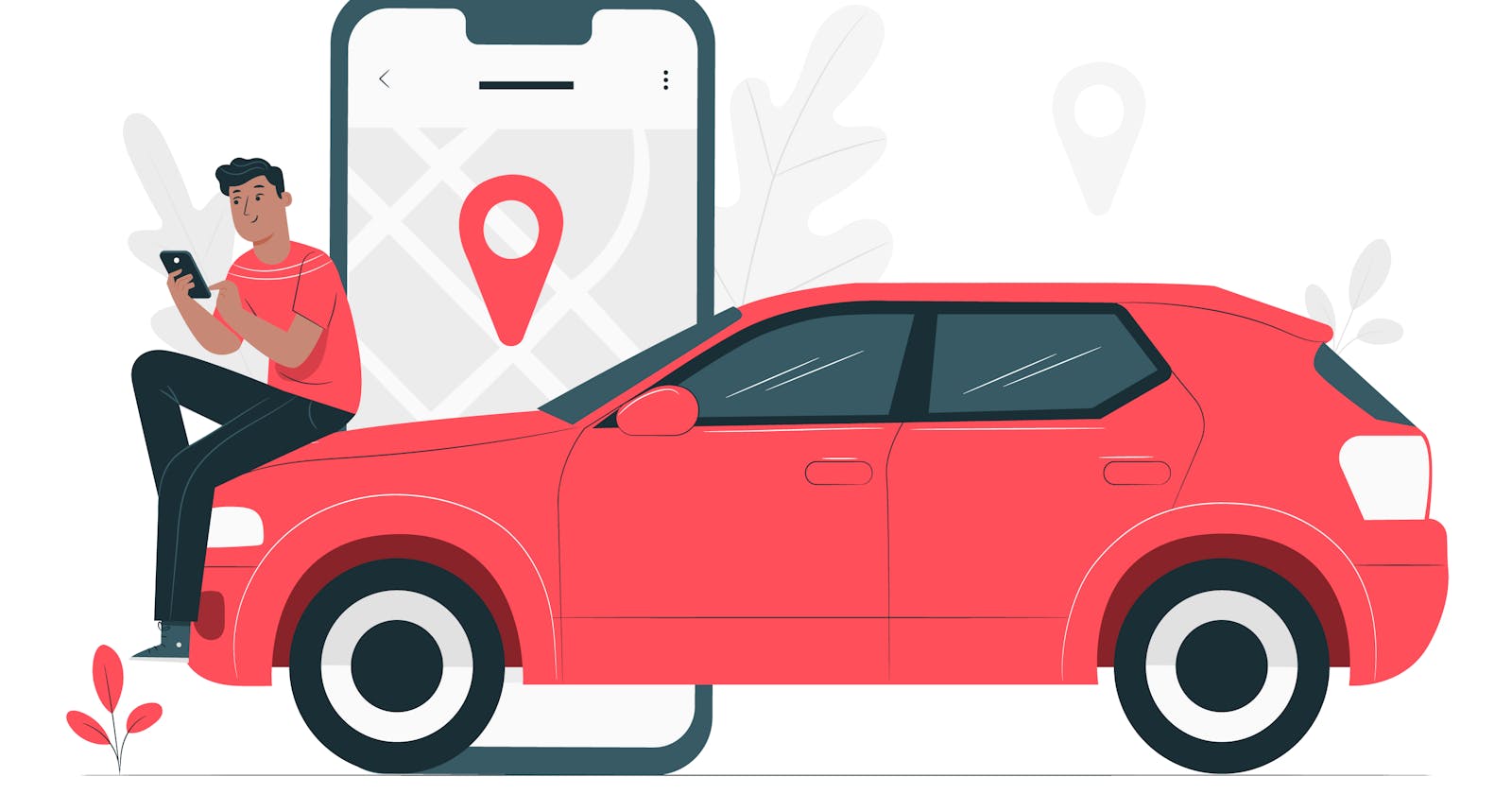In 2009, Garrett Camp and Travis Kalanick founded Uber. Garret Camp was a co-founder of stumble upon and a computer engineer. Travis Kalanick was a co-founder of Red Swoosh, which he sold for $19 million in 2007.
The concept arose one winter night following the end of the annual technology conference. When both founders are unable to hail a cab. And they got to thinking: why can't we start this as a business by booking taxis through mobile phones?
Garret Camp was so confident in his plan that he purchased the domain name ubercab-com. And he insisted on his co-founder accompanying him.
And the rest is history.
As of 2021, Uber is present in 72 countries and 10,500 cities. Uber had 118 million monthly active users and 19 million daily average trips by the end of the fourth quarter of 2021.
In New York City, Uber provides more than three times the number of rides as yellow taxis.
The taxi industry's revolution is divided into two parts: before and after Uber's existence. In this blog, we will look at Uber's business model and revenue channels.
Before and After Uber:
The traditional method of booking a taxi led us to wait longer, which was inconvenient. In addition, the fare was higher when compared to the modern pricing system. These are the issues that customers encounter when booking taxis. People have no idea how uber will solve their problems.
The availability of its app on the market increases the likelihood of its effectiveness. Just by using mobile phones, riders can book their taxi. As previously mentioned, uber pricing plans made it simple to acquire new customers who were dissatisfied with the traditional taxi business.
Without having any hurdles of waiting for a cab, riders can have easy access to the driver and the same goes for the drivers. As they solve the problem of accessibility it made them unique to the market. Furthermore, the simple app interface increases user engagement.
Workflow of Uber:
1- Vehicle type and location: The first step starts with choosing the vehicle type and location.
2- Request to taxi drivers: Request sends to drivers when passenger reserve a taxi.
3- Notification to the driver: The request is sent to the driver as a notification.
4- Details of the ride: If the driver accepts the request, the rider will receive the ride details.
5- Payment process: The payment process is done through an app or direct cash.
6- Ratings and reviews: Riders can rate their experience through the review & rating section of the app.
Impact of Uber on Riders & Drivers:
The biggest advantage for Uber is that riders and drivers can both have easy access to themselves. As a driver can accept the rider as they like. This gives the driver freedom of choosing their working hours. By simply having access to a car and mobile phone, drivers can have work without any prior work experience.
Riders do not need to be concerned about their safety because they can easily access the driver's information and previous record. This is where reviews and ratings come into play.
Uber has created a new market as this approach helps them to become pioneers in the market. And they started to influence the pricing model of the entire taxi business due to the lack of heavy competition. This becomes a headache for the driver and riders.
How Uber makes money:
The majority of its revenue comes from its commission. For eg, if the app charges $10 to riders, $8 goes to drivers, with the remaining $2 Uber charges as a commission. Uber nearly earned 20-25% as their commission.
To increase the Revenue streams, they found another way called surge pricing.
What exactly is surge pricing?
Uber launched surge pricing in 2014 and it makes them the first to launch this algorithm. It is an algorithm that charges higher than its average fare. It is active in the festive season, bad weather, and night rides. This helps both riders and drivers, as riders are ready to pay when they are in desperate need to travel to their destination.
On the driver's side, they are prepared to travel to high-demand areas and take advantage of competitive pricing. For Uber, it's being an additional revenue for them.
In simple terms, it was introduced to manage supply & demand and use to capitalize on this opportunity to increase revenue.
In-app advertising:
Uber has expanded its service to promotional activities. In-app advertising makes them show advertisements through an app. Ads show up after the rider has requested a trip. Some statistics say that 25% of its users see the ad.
There are a lot of controversies around (in-app advertising), uber’s co-founder and previous CEO Travis kalanick was opposed to the idea of in-app advertising, claiming that it would ruin the user experience.
Moreover, it generates additional revenue for Uber.
Uber customer segment:
As Uber steps into the global market, they realize that it is important to target every customer to broaden its market. That is why they come up with different product lineups. Below mentioned are some of its examples:
Uber x = Four-seat sedan
Uber XL= XUV or van
Uber pool = Share rides with a person who is headed to the same destination.
Uber moto = Bike taxi
Uber Auto = Auto rickshaw
Uber premium = High-end luxury vehicle
Uber knows how to treat every segment of its users. This gives a bigger hands-on user acquisition.
In the initial stage of the launch, uber struggled to acquire new drivers for their app. Because drivers are satisfied with their earnings. So, uber plans to come up with a marketing campaign called referral marketing. It enables drivers to receive referral bonuses and riders to give their friends free rides while earning credit for themselves, thereby acquiring both driver and rider becomes faster and easier.
Uber value proportion:
Their slogan says for riders “We will always give you a ride when you need it”
For drivers “We will always give you passengers when you want them”
Value proportion for Riders:
Affordable pricing
Reduces waiting time
Service available 24*7
Riders get an estimation of how much they have to pay
Easy access to drivers
Value proportion for Drivers:
Easy access to riders
Don’t need any work experience
Flexible working hours
Part-time earnings
Uber customer acquisition:
One of the difficult aspects of any business is acquisition. Convenient booking and pricing increase its brand popularity through word of mouth. Other than spending a huge amount on advertisement they focus on solving a customer pain point. The following are some of the channels through which they obtained their users:
Through an app
Word of mouth
Social media
Advertisement
Uber key activity:
These are the three main activities that uber has its primary focus:
Developing and maintaining an app
Improving engagement between rider and driver
Marketing & customer service
Driver onboarding
Final words:
We have arrived at the final section. I hope I have covered overall on Uber's business model and revenue channel. I have another bit of information to share with you. If you are an entrepreneur who wants to create an app similar to Uber or start a taxi-booking business?
We are a team that assists entrepreneurs in starting their taxi businesses. How? We build an Uber clone app exactly like Uber using Flutter technologies. Uber clone is 100% customizable in which you can adapt to recent trends and current market demand.
I hope you find this interesting. See you all in the next blog.

